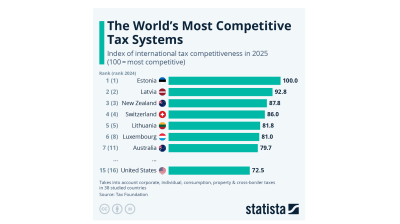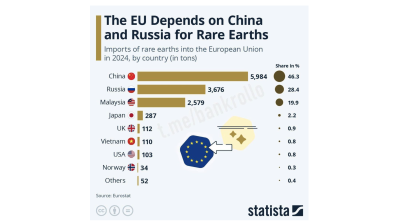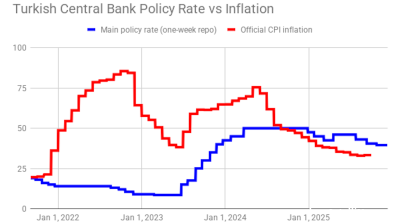The outlook for the production and export of Ukraine’s grain production this year has tumbled due to the war raging in the country, stoking fears of a global food crisis.
US analysts have lowered their forecasts for wheat production in Ukraine. The US Department of Agriculture (USDA) has revised its forecast downward for global wheat production for the 2022-23 marketing year, reducing previous estimates by 2mn tonnes of wheat.
USDA analysts have lowered their forecast for world wheat production in the July report for the 2022-23 marketing year that has just begun to 771.6mn tonnes, against the 773.4mn tonnes forecast previously, which is also less than the result of last season’s 779mn tonnes. Ukraine’s wheat production was reduced from 21.5mn tonnes to 19.5mn tonnes as the harvest gets under way in Ukraine, despite the fighting.
Other downward adjustments were made for Argentina to 19.5mn tonnes from 20mn tonnes and the EU from 136.1mn tonnes to 134.1mn tonnes. At the same time, the harvest forecast was increased in Canada, Russia and the US. According to analysts, the anticipated world wheat exports in the 2022-23 marketing year rose to 206.6mn tonnes against the 205.4mn tonnes in the June forecast. An anticipated shortage of wheat has pushed prices to multi-year highs.
The forecast comes on the back of a more upbeat forecast from Analyst APK-Inform for the overall grain production released at the end of June that improved the outlook for production, due to a better than expected corn harvest. The consultancy said in a statement that Ukraine could harvest 52.4mn tonnes of grain in 2022, including almost 18.2mn tonnes of wheat and 27.7mn tonnes of corn.
APK-Inform said 2022/23 exports could also rise to 40.6mn tonnes versus the previous outlook of 39.4mn tonnes. Before the war the government was forecasting that exports this season would reach 52.4mn tonnes (chart).
According to the State Customs Service of Ukraine, since the start of the 2022-2023 season on July 1 and as of July 8, Ukraine has exported 318,000 tonnes of grains and pulses, the Ministry of Agrarian Policy informed. Before the war Ukraine was exporting about 6mn tonnes of grain a month. That fell to about 1mn tonnes a month after hostilities began.
The war has hit Ukraine’s agricultural sector hard, one of the country’s biggest money-makers. Ukraine’s grain production, including wheat, has soared in recent years to the point where it has been vying with Russia for the title of “world’s biggest grain exporter.” After hitting an all-time record of 75.1mn tonnes of production in the 2018-2019 agricultural season, that saw 50.4mn tonnes of grain exported, production fell off marginally in subsequent years, but exports leaped again in 2019-2020 to 57.2mn tonnes as grain became a major source of foreign exchange earnings for the country, and production rose to a record 86mn tonnes in 2020-2021, 42.1mn tonnes of corn and 32.2mn tonnes of wheat.
After the coronavirus (COVID-19) pandemic related problems depressed both production and exports in 2020-2021, the country was on course to set a new all-time high for production of some 100mn tonnes of grain in 2021-2022 season, which has just come to an end, but production is down and exports have all but collapsed this year due to the naval blockade of Ukraine’s ports by Russia.
Russia targets grain
The outlook for this year’s production remains highly uncertain while the war continues. Russia appears to have begun to deliberately target Ukrainian wheat fields, with social media showing footage of incendiary bombs landing in the wheat and setting the fields on fire.
Russian troops have captured about 22% of the agricultural land in Ukraine. According to NASA Harvest satellite images, Russian forces today control about 22% of Ukraine's agricultural land. It is noted that winter crops are primarily grown in these territories: wheat, rye and barley. Data from Planet Labs satellites and the European Space Agency's Sentinel-2 mission show that 28% of winter crops and 18% of spring crops, including corn and sunflower, are under occupation. In addition, according to images from space, a portion of Ukrainian fields are no longer suitable for sowing due to damage from shells and mines.
At the same time, Russian troops have been reportedly stealing grain from storage facilities, mixing it with Russian grain, and exporting it to hungry countries in the Middle East and North Africa (MENA) for profit.
Export routes slowly opening up again
Currently it is estimated that between 20mn and 30mn tonnes of grain is trapped in Ukraine, unable to leave due to a naval blockade of Ukraine’s ports.
The blockade of Ukraine’s grain exports maybe starting to weaken, following talks in Turkey where a co-ordination centre was set up this week. Russia has said that it has no objection to Ukrainian ships leaving its ports to transport grain to the rest of the world; however, the Kremlin says that Ukraine must first de-mine these ports. Kyiv has been reluctant, arguing that doing so would open up these key facilities to a naval attack by Russian forces.
However, following Russia’s withdrawal from Snake Island last week, the first safe shipping route out of Ukraine has opened.
In the last week 16 ships passed through the mouth of the Bystre in Romania to receive Ukrainian grain for transport. The restoration of navigation through this channel is an important step, which will also allow the unloading of grain through the Sulina channel and speed up the export of grain, said Deputy Minister of Infrastructure Yuriy Vaskov last week.
Presently the channel’s capacity only makes it possible to receive only four to eight ships a day. Vaskov added that the ministry is negotiating with its Romanian colleagues and representatives of the European Commission regarding increasing the number of crossings through the Sulina Canal. More than 90 ships are waiting for their turn to enter the Ukrainian ports at the Sulina Canal. A total of 135 vessels are waiting to enter the Romanian Sulina Canal.
Data

Ukraine's trade deficit doubles to $42bn putting new pressure on an already strained economy
Ukraine’s trade deficit has doubled to $42bn as exports fall and imports balloon. The balance of payments deficit is starting to turn into a serious problem that could undermine the country’s macroeconomic stability.

BYD surpasses Tesla to become EV market leader – Statista
While Chinese manufacturer BYD already pulled ahead of Tesla in production volume last year, with 1,777,965 battery electric vehicles (BEV) produced in 2024 (4,500 more than Tesla), the American manufacturer remained ahead in sales.

Estonia has the world’s most competitive tax systems for the 11th year in a row – STATISTA
The Tax Foundation has released its International Tax Competitiveness Index which highlights the most competitive tax rates in different countries around the world. For the 11th consecutive year, Estonia had the highest score in the index.

EU rare earth supply dominated by China and Russia - Eurostat
The European Union remains heavily dependent on China and Russia for rare earth imports, with nearly three-quarters of its supply sourced from the two countries in 2024, according to data published by Eurostat and reported by Statista.


